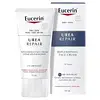What's inside
What's inside
 Key Ingredients
Key Ingredients

 Benefits
Benefits

 Concerns
Concerns

 Ingredients Side-by-side
Ingredients Side-by-side

Water
Skin ConditioningAloe Barbadensis Leaf Juice Powder
Skin ConditioningSodium Ascorbyl Phosphate
AntioxidantDimethyl Sulfone
SolventCitric Acid
BufferingPolysorbate 20
EmulsifyingGlycerin
HumectantHamamelis Virginiana Leaf Extract
Skin ConditioningSodium Hyaluronate
HumectantGlycolic Acid
BufferingSuperoxide Dismutase
AntioxidantLactobionic Acid
BufferingHydrolyzed Hyaluronic Acid
HumectantGlutathione
Simmondsia Chinensis Seed Oil
EmollientMandelic Acid
AntimicrobialLinoleic Acid
CleansingRetinyl Palmitate
Skin ConditioningHelianthus Annuus Seed Oil
EmollientOleic Acid
EmollientPalmitic Acid
EmollientStearic Acid
CleansingTocopherol
AntioxidantLinolenic Acid
CleansingXanthan Gum
EmulsifyingPentylene Glycol
Skin ConditioningButylene Glycol
HumectantMethyldihydrojasmonate
MaskingHydroxyphenyl Propamidobenzoic Acid
Skin ConditioningCaprylyl Glycol
EmollientN-Prolyl Palmitoyl Tripeptide-56 Acetate
Skin ConditioningBenzyl Alcohol
PerfumingDehydroacetic Acid
PreservativeWater, Aloe Barbadensis Leaf Juice Powder, Sodium Ascorbyl Phosphate, Dimethyl Sulfone, Citric Acid, Polysorbate 20, Glycerin, Hamamelis Virginiana Leaf Extract, Sodium Hyaluronate, Glycolic Acid, Superoxide Dismutase, Lactobionic Acid, Hydrolyzed Hyaluronic Acid, Glutathione, Simmondsia Chinensis Seed Oil, Mandelic Acid, Linoleic Acid, Retinyl Palmitate, Helianthus Annuus Seed Oil, Oleic Acid, Palmitic Acid, Stearic Acid, Tocopherol, Linolenic Acid, Xanthan Gum, Pentylene Glycol, Butylene Glycol, Methyldihydrojasmonate, Hydroxyphenyl Propamidobenzoic Acid, Caprylyl Glycol, N-Prolyl Palmitoyl Tripeptide-56 Acetate, Benzyl Alcohol, Dehydroacetic Acid
Water
Skin ConditioningUrea
BufferingGlycerin
HumectantTriisostearin
Skin ConditioningPentaerythrityl Tetraisostearate
EmollientCyclomethicone
EmollientDimethicone
EmollientCaprylic/Capric Triglyceride
MaskingCetyl Alcohol
EmollientSodium Lactate
BufferingGlyceryl Stearate
EmollientBiosaccharide Gum-1
HumectantBenzyl Alcohol
PerfumingPEG-40 Stearate
EmulsifyingMethylparaben
PreservativeLactic Acid
BufferingLanolin Alcohol
Emollient
 Reviews
Reviews

Ingredients Explained
These ingredients are found in both products.
Ingredients higher up in an ingredient list are typically present in a larger amount.
Benzyl Alcohol is most commonly used as a preservative. It also has a subtle, sweet smell. Small amounts of Benzyl Alcohol is not irritating and safe to use in skincare products. Most Benzyl Alcohol is derived from fruits such as apricots.
Benzyl Alcohol has both antibacterial and antioxidant properties. These properties help lengthen the shelf life of products. Benzyl Alcohol is a solvent and helps dissolve other ingredients. It can also improve the texture and spreadability.
Alcohol comes in many different forms. Different types of alcohol will have different effects on skin. This ingredient is an astringent alcohol.
Using high concentrations of these alcohols are drying on the skin. They may strip away your skin's natural oils and even damage your skin barrier. Astringent alcohols may also irritate skin.
Other types of astringent alcohols include:
According to the National Rosacea Society based in the US, you should be mindful of products with these alcohols in the top half of ingredients.
Any type of sanitizing product will have high amounts of alcohol to help kill bacteria and viruses.
Learn more about Benzyl AlcoholGlycerin is already naturally found in your skin. It helps moisturize and protect your skin.
A study from 2016 found glycerin to be more effective as a humectant than AHAs and hyaluronic acid.
As a humectant, it helps the skin stay hydrated by pulling moisture to your skin. The low molecular weight of glycerin allows it to pull moisture into the deeper layers of your skin.
Hydrated skin improves your skin barrier; Your skin barrier helps protect against irritants and bacteria.
Glycerin has also been found to have antimicrobial and antiviral properties. Due to these properties, glycerin is often used in wound and burn treatments.
In cosmetics, glycerin is usually derived from plants such as soybean or palm. However, it can also be sourced from animals, such as tallow or animal fat.
This ingredient is organic, colorless, odorless, and non-toxic.
Glycerin is the name for this ingredient in American English. British English uses Glycerol/Glycerine.
Learn more about GlycerinWater. It's the most common cosmetic ingredient of all. You'll usually see it at the top of ingredient lists, meaning that it makes up the largest part of the product.
So why is it so popular? Water most often acts as a solvent - this means that it helps dissolve other ingredients into the formulation.
You'll also recognize water as that liquid we all need to stay alive. If you see this, drink a glass of water. Stay hydrated!
Learn more about Water